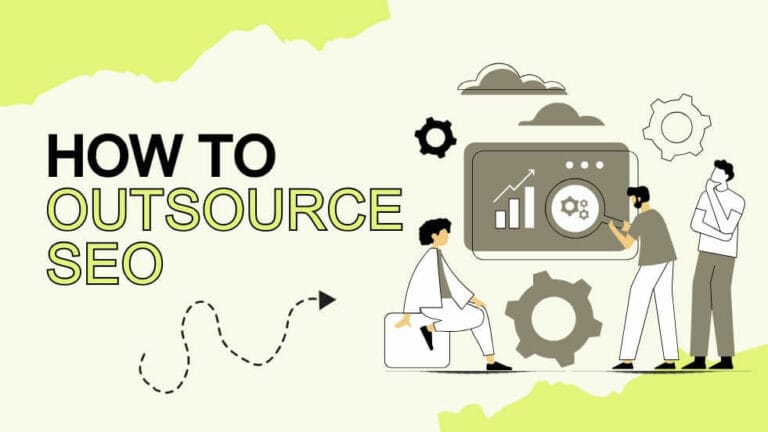Links aren’t what they used to be. Walk into any SEO meetup and you’ll hear people rattling off their backlink numbers like they’re reading stock prices, but there’s more to the story.
A local plumber just spent $3,000 building links to his website. Sure, his Domain Authority jumped from 15 to 32 (a metric that’s supposed to predict how well a site ranks), but his phone isn’t exactly lighting up with new customers. That’s what happens when you chase numbers instead of results.
Smart business owners are starting to see through the smoke and mirrors. They don’t care about fancy metrics or SEO scorecards. What matters is getting real people to click through and become paying customers. That’s the bottom line, plain and simple.
Key Takeaway
- A good backlink from an industry leader’s website brings more trust and customers than a hundred random links from blogs nobody reads
- Smart businesses don’t obsess over link counts or rankings, they watch their phone ring and email inbox fill up with real customers who found them through quality referrals.
- The numbers don’t lie – when you divide a page’s yearly revenue by what you spent on getting links to it, that’s when you know if your strategy’s working or just burning cash.
Understanding Link Building ROI Beyond Rankings
Link building might seem like just another SEO trick to climb Google’s ladder, but that’s missing the bigger picture. Smart businesses know there’s more to it than watching their ranking numbers go up or down.
Defining Link Building ROI as Business Value Generation
Link building needs to pay its way, plain and simple. When a company spends money getting other sites to link back to them, they’re not just buying better search positions – they’re investing in their online presence.
A good link to a product page can send ready-to-buy visitors straight to checkout. Plus, when respected sites link to you, it’s like a vote of confidence that makes Google trust your whole site more, especially when those connections come from targeted blogger outreach services that align with your audience.
Core Elements Influencing Link Building ROI
The math starts with figuring out what each page is worth. Look at how many people search for related terms each month, guess how many might click through (usually 3-7% for top spots), and multiply that by how much each visitor’s worth. There’s no point building links to pages that don’t make money, that’s just throwing good money after bad.
Quality beats quantity every time when it comes to links. Five links from industry leaders will do more good than fifty from random blogs nobody reads. The good links bring both authority and actual visitors who might buy something, which is why aligning them with well-placed sponsorship marketing opportunities often amplifies both referral traffic and brand credibility.
Before starting any campaign, it’s worth checking out what the competition’s doing. If they’ve got hundreds of solid links, you’ll need a decent budget to catch up.
Common Misconceptions and Pitfalls in Link Building ROI
Too many companies jump into link building without running the numbers first. That’s like starting a road trip without checking if you’ve got enough gas money.
Some folks get caught up in a numbers game, thinking more links always means better results. That’s not how it works – bad links are worse than no links at all.
And here’s another common mistake: building tons of links to pages that don’t convert visitors into customers. All the traffic in the world won’t help if nobody’s buying.
Strategic Link Building as a Long-Term Growth Investment
Think of link building like planting a garden, it takes time, but the results keep growing. When you build up a solid collection of quality links, your whole site becomes stronger. It’s harder for competitors to catch up, and you don’t have to panic every time Google tweaks its algorithm.
Calculating Link Building ROI with Data-Driven Metrics
Credits: Ahrefs
Getting real numbers behind link building isn’t exactly rocket science, but it does need a sharp eye for detail. Most marketers probably wing it, but there’s a better way to figure out if those backlinks are worth the money. [1]
Estimating Annual Page Value
First things first – you’ve got to know what that page might earn in a year. Here’s what to look at:
- Monthly search numbers from tools like Ahrefs (they’re pricey but worth it)
- Click rates based on where you think you’ll land in search
- How many visitors actually buy stuff or reach out
- What each sale’s worth to the bottom line
Let’s say you’re shooting for spot #3 on Google. With 10,000 searches a month, you might get:
10,000 × 15% = 1,500 visits
1,500 × 5% = 75 conversions
75 × 200 = 15,000 monthly revenue potential
Yearly that’s 15,000×12 = 180,000
Determining Link Building Costs by Backlink Quality Tiers
Links aren’t created equal, and neither are their price tags. Here’s what you might pay:
| Backlink Tier | Cost per Link |
| Low Authority | 250−500 |
| Medium Authority | 500−900 |
| High Authority | 900−1,250+ |
Say you need 20 decent links to keep up, that’s about 14,000 (figuring 700 each on average, based on standard link building pricing for mid-tier authority domains).
Analyzing Competitor Backlink Profiles
Look at what’s working for everyone else. When the top pages have 50 solid links with domain authority over 50, and you’re sitting there with 10 questionable ones, well… you’ve got some catching up to do.
Don’t chase every link you see though. Some aren’t worth the pixels they’re printed on.
Applying ROI Formula to Quantify Profitability
The math isn’t fancy:
ROI = (Annual Page Value – Link Building Cost) / Link Building Cost × 100%
Taking our numbers:
Annual Page Value = $180,000
Link Building Cost = $14,000
ROI = (180,000 – 14,000) / $14,000 × 100% = 1,157%
That’s $11.57 back for every dollar spent. Not too shabby for a year’s work.
Maximizing Link Building ROI Through Optimization Strategies
Getting links isn’t the whole story anymore. Smart businesses know there’s more to it than throwing backlinks at a website and hoping for the best.
Conversion Rate Optimization on Linked Pages
Nobody likes leaving money on the table. When visitors land on a page, they’re probably looking for something specific. A few tweaks here and there – maybe moving that “Buy Now” button up, writing better headlines, or just making the page load faster, can bump conversion rates from 5% to 7%. That’s a lot of extra sales from the same traffic you’re already getting. [2]
Content Quality Enhancement to Reduce Link Dependency
Great content doesn’t need as many links to rank well, it’s that simple. When you’ve got pages that naturally attract links (think detailed guides or original research), they help prop up your money-making pages. Plus, you won’t need to stress about getting hundreds of links just to move the needle.
Using the right anchor text makes a difference too. Mix it up between your brand name and what you’re actually trying to rank for – just don’t go overboard with exact-match keywords.
Incremental Traffic and Revenue Growth Modeling
Let’s break down the numbers. If your link building brings in 200 new visitors each month, and 5% of them buy something worth $100:
200 × 5% × $100 = $1,000 extra monthly revenue Yearly, that’s $12,000
Keeping track month by month shows you exactly what you’re getting back from your investment.
Utilizing Traffic Value as a Proxy for Revenue Estimation
Sometimes you can’t see direct sales numbers right away. No problem – look at what you’d pay for the same traffic in ads. If those 1,000 organic visitors would cost you $1,000 in PPC campaigns, that’s a decent way to figure out what your organic traffic is worth.
Long-Term Link Building Benefits and Sustainable Growth
Link building isn’t just about quick wins – it’s more like planting a garden that grows stronger each season.
Domain Authority Growth from Quality Backlinks
The math is pretty straightforward here: good backlinks build trust, and that trust spreads across your whole website. It’s kind of like a snowball effect – once you’ve got some momentum, new pages tend to rank faster and better. That’s why the return on investment typically gets better over time, not worse.
Stability Against Search Algorithm Updates
Search engines throw curveballs with their updates, but websites with solid, varied backlink profiles don’t get knocked around as much. Think of it as building a house with a strong foundation – sure, there might be some storms, but you won’t see the dramatic ups and downs that shakier sites experience.
Strategic Link Building as a Competitive Advantage
Getting your backlink game up to (or past) what your competitors are doing opens doors to ranking for those juicy keywords everyone wants. When link building lines up with where the business wants to go, you’re setting yourself up for steady growth, quarter after quarter.
Avoiding ROI-Killing Mistakes and Ensuring Transparent Reporting
Nobody wants to throw money down the drain on sketchy links that don’t deliver. That’s why tracking everything (and I mean everything) matters so much. Working with teams who’ll show you exactly where every dollar goes, and what it’s doing for your business, means you’re building something that’ll last – not just chasing quick fixes.
Practical Advice
Smart link building starts with numbers that matter, how much revenue could this page bring in? What links do we actually need to compete? Quality links pack more punch than dozens of weak ones, and that’s just good business sense.
When pages convert better and content shines, you don’t need to go crazy with link numbers. Monthly tracking keeps things honest. Think of links as a long-term play, not a quick fix. If you can’t connect your link work to actual dollars, it’s time to step back and reset.
References
- https://www.searchenginejournal.com/link-building-roi/297349/
- https://www.outerboxdesign.com/articles/cro/page-speed-conversion-statistics/
Related Articles
- https://createandgrow.com/blogger-outreach-services/
- https://createandgrow.com/sponsorship-marketing/
- https://createandgrow.com/link-building-pricing/
Frequently Asked Questions





